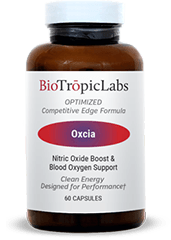3 tips to keep your edge
Sad but true, our bodies change as we age. It gets easier to put on weight and harder to maintain muscle, hair gets gray(er); in short, things change even more. You may not bounce back as quickly after hard workouts and race efforts as you used to. And you may notice that your athletic performance has started to decline as well.
But you’re not one to take that news lying down, watching TV with a bag of Doritos on your chest. Nope – you want to stay as competitive as possible as you age up. Maybe you still have an Ironman (or mini) on your bucket list. Road tripping with friends to gobble up an armload of medals at age-group competitions might still sound like fun. Or maybe you want to keep one step ahead of your competitors at your local races.
Here are three ways to stay stronger and faster longer:
- Strategic strength training
- Conservative interval training
- Deliberate recovery
1. Strength training
After age 30, both men and women experience a decline in sex hormone levels that makes it harder to retain and improve muscle mass. And women especially can lose bone density at an alarming rate after menopause.
Strength training can help slow the loss of muscle and bone mass. And when done right, it can also prevent injury from repetitive motion in your sport, falls, and other causes.
Strategic strength training is not about building photogenic muscles. It’s about choosing moves that are functional in ways that really count. Yes, you should squat so you can still get off the “can” and out of your chair when you’re 90. But you can also use strategic strength training to make life and your sport easier NOW.
What to do:
- Plan to strength train 2-3x per week. Adjust the length, content and intensity of your sessions so you can recover quickly.
- Incorporate exercises that will help you avoid common overuse injuries in your sport. For example, runners should focus on strengthening knee stabilizers, hips, hamstrings and glutes. Swimmers should strengthen shoulders with external rotation exercises.
- Work with your body, not against it. Use dumbbells vs. bar bells to allow your arms to move more freely. Or try deadlifts from mid-shin vs. from the floor to accommodate restriction in your hips or low back. If you have a movement restriction, see a therapist about it. Don’t try to force your body to work against it in the weight room.
- Get ideas for moves to include in your workouts from reliable sources who focus on older athletes. Don’t just do what 20 year old Cross-Fitters are doing!
- Emphasize a variety of core moves every session, especially at the end of the session. A stronger core will help with low back pain, balance to avoid falls, and posture and performance in your sport. Hit low abs, low back, and obliques with stabilizing, moving, bending, and twisting moves. If you have a good base of core strength, try out K-Rail’s suggested moves.
- You may be able to boost muscle building by incorporating doses of protein at strategic times of the day (see recovery section) and/or with a supplement such as Ultra Testosterone Support.
2. Conservative Interval Training
Joe Friel, a godfather of interval training for cycling and triathlon, penned the book “Fast After 50 – How to Race Strong for the Rest of Your Life” in 2015 as he turned 70. As he notes, science shows that aerobic capacity, or VO2max, declines rapidly when older athletes slide into a “long, slow distance” (LSD) mode of training. It can be tempting to just keep putting in the miles at an easy pace, and give up trying to be “fast” after a certain age. However, maintaining a sustainable level of high intensity interval training will allow you to keep a higher VO2max well into your 70s.
Tips for high-intensity interval training (HIIT):
- Warm up well – a good warm-up will lubricate your joints, warm your muscles, and ensure a good enough range of motion to execute your workout. Dynamic stretching can be helpful. Google it.
- Use an intensity, interval time, number of intervals and rest time between intervals that is only slightly more challenging than what you typically do. Don’t go crazy on the first day! The goal is to introduce something that is sustainable. Make sure you are able to recover from the session well enough to do your next workouts as planned.
- Use intervals that have worked for you in the past. If you are new to interval training, try 3 x 3 min near (but not above) your “red line” with 1-1.5 min of easy recovery in between. You can also try out our treadmill HIIT routine. It’s better to slightly ramp up your effort during the 3 minutes instead of starting off too hard and then dropping back, so start conservatively.
- Cool down – gradually decrease your effort level from easy to very easy as you finish, to allow your circulation to return to a resting state.
- Allow plenty of recovery – plan to incorporate an easy day or two after a hard session. Try performing intervals no more often than every 7 days at first. You may be able to incorporate a second session per week over time.
Note that it is easier to recover from hard intervals in less weight-bearing sports. If you’re a multi-sport athlete, plan to incorporate intervals into all sports where you can do it without injury. But weight the number of sessions per month more strongly toward swimming, less so toward running, with cycling somewhere in the middle.
3. Deliberate Recovery
Every hard training day puts your body under stress. You only get stronger when your body overcomes that stress. If you keep piling on the stress before recovery is mostly complete, you dig a deeper and deeper hole that your body can’t climb out of. As we age, it typically takes longer to recover from intense or long sessions. So if you want to keep those types of sessions in your schedule for better performance, you may need to pay more attention to recovery than you have in the past.
It’s important to recognize the signs that you’re not yet recovered from a hard workout – feeling tired, feeling sore, poor sleep (or worse than usual!), easy workouts that feel harder than they should, weakened immune system (cold coming on, etc). When these signs are present, you should to incorporate a rest day or active recovery day to give your body a break. Adjust your schedule of interval training days so that you recover fast enough to keep up the volume of work you desire.
Here are some ways to recover faster:
- Improve your circulation during hard workouts to fuel and flush muscle cells better. Try a vasodilating supplement such as Oxcia, AFA Formula, Chlorella Stack or Nitric Thrust.
- Incorporate complete protein and some carbs into a post-workout snack within 30 minutes of finishing a strength or interval session to encourage uptake by hungry muscles. Older athletes may need more protein than younger ones. Aim for 40 grams of a protein source high in branched chain amino acids (egg, whey, etc).
- Try taking in protein 30 minutes before sleep on days that included a strength or interval workout. Mixing a scoop of protein powder with water will do the trick. This dose may boost growth hormone (hGH) levels during sleep. For some, taking calories this close to bedtime may interfere with sleep, so see how it works for you. Check out this post for more about how to boost hGH levels.
- Incorporate 1-2 days of complete rest per week if your recovery needs are acute. Active recovery (short sessions done at a truly easy intensity) can also be helpful.
- Rid your diet of junk food, excess sugar and alcohol, and substitute whole foods with more nutrient value and fiber. Clean eating can help you feel better in general.
- You may find that muscle soreness is reduced and range of motion is increased by incorporating a few minutes of foam rolling after a hard session.
- Aim for plenty of high quality sleep. If you are getting few hours and waking up frequently on a regular basis, look for solutions that will allow you to get more restful sleep. Adjustments to your sleep and pre-sleep routines, as well as Deeper Sleeper or one of our other stress and pain relief supplements may help.
And those are my three tips!
While you may not race as fast when you’re 65 as you did when you were 30, you can still put the hurt on the others in your age group when you incorporate strength, interval training and better recovery practices into your routine. Now get after it!
Always consult a medical professional before starting any exercise routine. The suggestions above are only suggestions. You should follow the advice of your physician and your own good sense above all.
Featured image by Miguel A. Amutio on Unsplash

